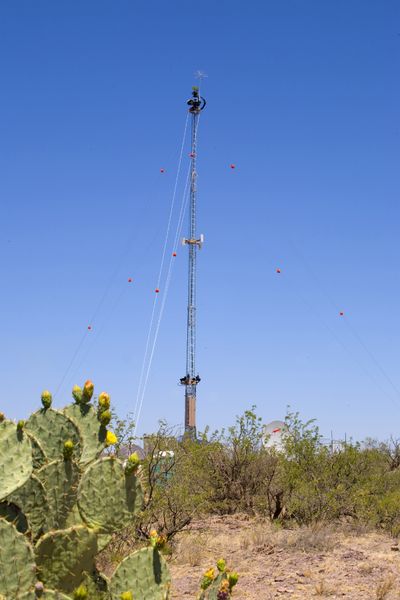U.S. security initiatives called flops
Costly technologies unproven before use

WASHINGTON – A high-tech “virtual fence” to catch illegal border crossers. Next-generation nuclear detectors at ports. Tamper-proof driver’s licenses in every state.
These were signature Bush administration initiatives to protect the country against terrorism and secure its borders. All have been proven to be flops, according to government and outside experts, and expensive ones at that:
•The Department of Homeland Security paid defense contractor Boeing Co. $1.1 billion to build what is sometimes called the virtual border fence. But the system of radars and cameras can’t consistently tell terrorists from tumbleweeds, according to the Government Accountability Office. In March, Homeland Security Secretary Janet Napolitano froze funding on the project.
•In February, she overhauled plans to install so-called Advanced Spectroscopic Portal radiation detectors to screen cargo at ports. The units were prone to false alarms and hadn’t proved themselves in testing, according to the accountability office. Developed by defense contractor Raytheon under a $1.2 billion program, the $822,000 detectors will now be relegated to a secondary screening role.
•Last May, the Transportation Security Administration removed 37 explosive trace detection machines – or “puffers” – that had been deployed at airports to screen airline passengers at a total cost of $30 million. They had maintenance problems and didn’t work consistently.
“DHS was pushing technology pretty hard under the Bush administration, and we were willing to risk failure because of the risks,” said Stewart Baker, the former Homeland Security policy chief and author of a forthcoming memoir, “Skating on Stilts.” “I’d put all of those things in the category of course corrections based on new data, perhaps made easier because this administration had not started the projects and so it could declare them failures without taking blame for the failure.”
Napolitano aides say they don’t blame their predecessors, who were under intense pressure to prevent another terrorist attack, for attempting fixes that ultimately didn’t pan out. But outside analysts say the failures were the predictable result of an agency with too little experience at making major purchases and of contractors peddling untested products.
“Before they did the puffers, everybody told them it wasn’t going to work,” said Richard Roth, an aviation security expert with CTI Consulting in Maryland. “The only guy that said it was going to work was the lobbyist for the company.”
Corporations “have figured out that a whole lot of money has been budgeted for homeland security and counterterrorism, and they’re really eager to market all sorts of gigantic technological solutions,” said Charles Faddis, a former CIA officer and author of “Willful Neglect: The Dangerous Illusion of Homeland Security.”
“We end up in a situation where there’s all sorts of very straightforward things that we don’t do, because there’s no money to be made in it,” he said.
For example, Faddis said, the government should make greater use of explosive-sniffing dogs at airports and should require simple steps to counter vehicle bombs at industrial plants that store dangerous chemicals.
The virtual fence, radiation detectors and the puffer machines each had something in common, the accountability office says: All three technologies were selected before having been proven to work.
Sometimes that’s a reasonable way to deploy new security measures, said Brian Jenkins of the RAND Corp., who has advised the government on homeland security measures. “In some cases, you are going to deploy some technology with the objective of, let’s see how well it works in the field,” he said.
Still, he said, the Homeland Security Department is overly reliant on technology.
“We are constantly searching for a silver bullet. We think that can solve all problems with superior technology,” he said. “I don’t think that’s true.”
Technology aside, some major Homeland Security initiatives have buckled in the face of political and fiscal resistance.
Napolitano, a former Arizona governor, last year called for the repeal of a 2005 tamper-proof driver’s license law, known as Real ID, which was opposed by cash-strapped states that had to pay for it. In the meantime, she extended the deadline for states to comply until May 2011. Napolitano said last year that she favored “something else that pivots off of the driver’s license but accomplishes some of the same goals.”